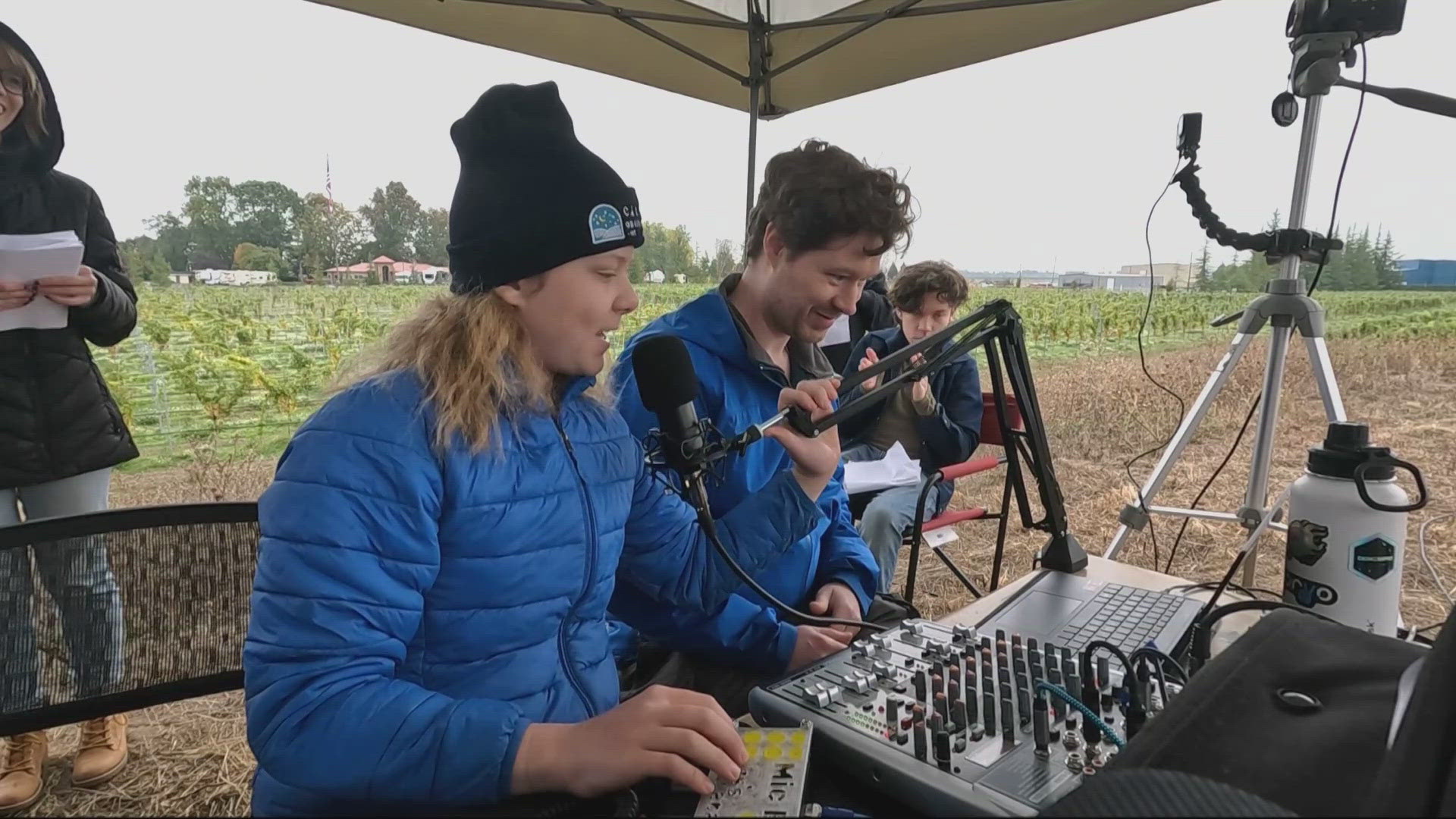MCMINNVILLE, Ore. — Zeke Wheeler, 13, is one determined teenager. Five years ago, at the age of 8, he asked his dad a simple yet complex question.
"How can I contact an astronaut on the International Space Station?" Zeke recalled asking.
His dad didn't know. Neither did his mom.
"So, they went online and saw that there is a ham radio on the International Space Station," Zeke's mom, Lara Triback said.
"That meant if I got my ham radio license," Zeke said. "I would be able to use it to talk to astronauts on the International Space Station."
It took Zeke three tries to pass the test for his ham radio license. They started researching, designing and building antennas that would connect with the ham radio they would use. They learned everything they needed to know about electrical engineering and building the equipment, testing it and getting it to connect to the ham radio they had learned about in space.
"They were able to reach the ISS repeater tower, but they still couldn't get into the ISS to contact an astronaut. They finally realized that astronauts are not available to pick up their ham radios," Triback said.
The five-year journey wasn't without its bumps in the road.
"The low noise amplifier that we were going to use to amplify the signal, it was very finnicky. Mainly, the matching circuit that matches it to 50 ohms for our radio setup. It had problems," Zeke said about one of the many learning curves he and his dad faced. "I like overcoming challenges. I like doing this sort of thing for fun."
He and his dad designed and built a 10-foot-long "giant" helical antenna to be used to contact the ISS and set it up on a bluff overlooking the Evergreen Aviation and Space Museum outside McMinnville. As the International Space Station orbits high above the Earth, a crew of volunteers and family helped set up the equipment on the bluff that would make Zeke's five-year-long mission of talking with the ISS come to life.
Among those helping achieve that goal are his dad Eric, his mom Lara, his grandpa Mark Wheeler and a whole host of volunteers from a local ham radio club, plus the Carlton Observatory and the Evergreen Aviation and Space Museum.
"It sends chills up my spine to see where he's at. There are times where I'm so overwhelmed, it's hard to speak sometimes," Mark Wheeler said.
Even with a working ham radio, antennas and all the bells and whistles needed to connect to a laboratory orbiting the earth at 17,000 miles an hour, they still needed a little help from NASA to make it all possible.
Through their research, they found Ariss, NASA's educational outreach program that schedules calls between astronauts and students. They applied and worked with Wheeler's online charter school, Teach Northwest, to make it all possible. Ariss approved and accepted their application, and NASA set them up with a 10-minute window to talk with astronaut Sunita Williams.
After everything was double checked and the wires were connected, it was finally time to make a call to the ISS.
"NA1SS, NA1SS?" Zeke spoke the call sign for the ISS into his ham radio. "This is Kilo, Juliet, 7, November, Lima, Lima."
After a couple attempts of repeating his call sign, Williams's voice crackled over the radio in response.
"Kilo, Juliet, 7, November, Lima, Lima," Williams said, her voice drowned out by loud cheers from the large crowd that had gathered outside the museum to witness Zeke's attempt.
After five years of questions and answers and setbacks, Zeke had answered the one question he was determined to answer.
"Sunita, this is Kilo, Juliet, 7, November, Lima, Lima. It is a great honor to connect with you today. I read you fine," Zeke said.
Zeke never meant to carry on a conversation with Williams or any astronaut on the ISS: "I didn't want to; I just wanted to know how — to say that I was able to successfully make all the equipment to get it to work."
"Are you ready to receive questions?" Zeke asked Williams.
"Yes," she replied.
With the signal established, he turned over the microphone to his online classmates, many of them he's never met before. The students had prepared written questions to ask over Wheeler's ham radio to an astronaut in space.
"Does the International Space Station make its own oxygen for the astronauts? Over," one student asked.
"Great question," Williams responded. "Yes, we do. We also bring oxygen up here, but simply, we split water, H20, into hydrogen, oxygen and that gives us oxygen. Over."
"What kind of plant experiments happen on the International Space Station? Over. "
"All sorts of plant experiments," Williams answered. "In the lab that I'm in right here, we're growing some grass. We've grown soybeans."
The conversation between the students and Williams lasted around ten minutes. Every student was able to ask all of their questions and then the signal was lost. The ISS was no longer above and in range of Wheeler's antennas.
"Thank you so much, Sunita, and we are about to lose contact," Zeke said into his ham radio.
He had proven to himself that the possibilities of his imagination are endless.
"I want to get more kids interested into hands-on STEM and doing projects like this," Zeke said.
In the last week of October, Zeke will travel to Washington, D.C., to present to a panel of judges the handmade desktop-sized satellite tracker he built. He's one of 30 finalists in the 2024 Thermo Fisher Scientific Junior Innovators Challenge for middle school students, competing for a cash prize.

